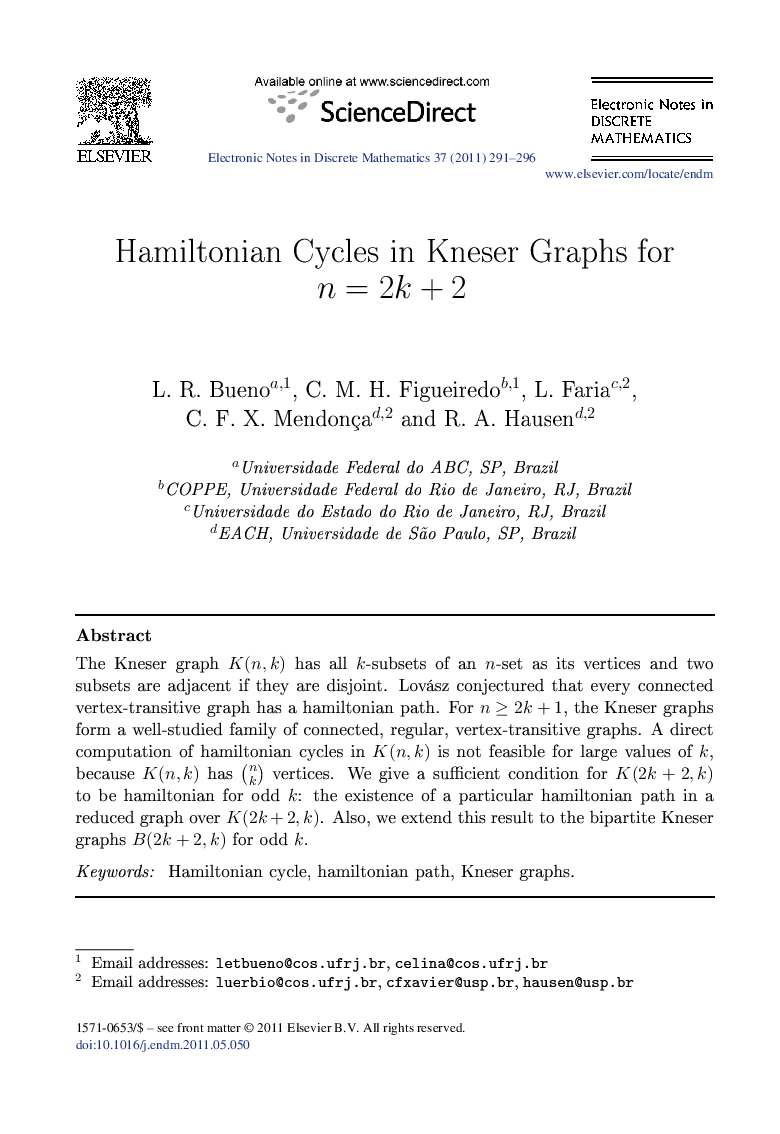| Article ID | Journal | Published Year | Pages | File Type |
|---|---|---|---|---|
| 4652628 | Electronic Notes in Discrete Mathematics | 2011 | 6 Pages |
Abstract
The Kneser graph K(n,k) has all k-subsets of an n-set as its vertices and two subsets are adjacent if they are disjoint. Lovász conjectured that every connected vertex-transitive graph has a hamiltonian path. For n⩾2k+1, the Kneser graphs form a well-studied family of connected, regular, vertex-transitive graphs. A direct computation of hamiltonian cycles in K(n,k) is not feasible for large values of k, because K(n,k) has vertices. We give a sufficient condition for K(2k+2,k) to be hamiltonian for odd k: the existence of a particular hamiltonian path in a reduced graph over K(2k+2,k). Also, we extend this result to the bipartite Kneser graphs B(2k+2,k) for odd k.
Related Topics
Physical Sciences and Engineering
Mathematics
Discrete Mathematics and Combinatorics
